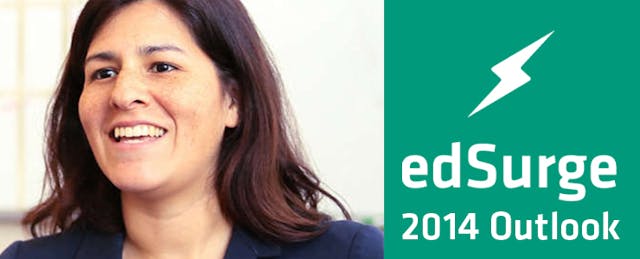In 2013, schools across our nation increased our stockpiles of tech in preparation for the Big One--the arrival of the Common Core State Standards.
It will be too early to tell in 2014 if the implementation of the Common Core will lead to a renaissance in teaching and learning, or perpetuate an overemphasis on standardized tests, leading to dark ages and further decline for our nation’s public schools.
As Esther Wojcicki points out in her outlook for 2014, “Since the advent of No Child Left Behind [2001], US schools have been teaching to the test.” The accountability movement in education is still strong, and I predict will gain steam in the years to come with the arrival of a new wave of standardized assessments, SBAC/PARCC, and thus “teaching to the test” will still be a potential threat to the implementation of the Common Core.
Learn Capital partner, Tom Vander Ark has good reason to be a fan of the Common Core as edtech investments continue to grow and tools for personalized learning just keep getting better. While innovation will continue to flourish in the edtech sector, the question still remains will the increases of tech in our schools lead to a mainstream of innovation in the classroom in 2014?
Even though I am a believer in the promise of technology to open new paths to learning, in the same way Karen Cator explains, “the printing press and free public libraries caused literacy rates among European adults to soar by making books readily available to all,” I must admit--we are just at the beginning of a long road ahead. The paths are still being paved with potholes that need to be patched, and the infrasturce is yet to be completed. This is why I believe 2014 will be all about the edtech basics: connectivity, device management, professional development.
While I am excited about Chris Dede’s predictions of higher-quality digital materials and augmented reality tools in the years to come, my biggest concern as a classroom teacher is if I will have a reliable internet connection to access the latest edtech innovations that await us in 2014. I have been flirting with a blended learning environment in my class this year, but have yet to fully embrace the model because my school is not 1:1. My school is well stocked for SBAC, but we are in this growing pain stage where we are reaching our upper-limit in terms of resources to manage our tech infrastructure. The demands for devices continues to grow with no plans in sight for a move to a viable 1:1 model in our district.
While the demand for devices continues to grow, I would categorize the use of technology at my school primarily at the substitution and maybe augmentation stages of the SAMR model. These enhancements are a good start to building routines for teachers to make the integration of technology in the classroom become a habit of instruction. In order to form routines of integrating tech, we need to start small and keep it simple.
As more and more teachers use devices at my school, I see new demands for professional development. Creative solutions for professional development are an essential need for the new year. The PD revolution on the horizon will not be televised. For the vast majority of teachers, it will not take place 140 characters at a time, either. Rather, just like Greg Klein predicts that “schools will make flexible purchasing decisions” to meet the needs of all students, we need a variety of PD channels to meet the diverse needs of teachers as well. Let’s clear the path to putting connected devices in the hands of students and teachers, and empower teachers to choose their own professional development trail.
I am not that interested in the new “killer app” that will be developed in 2014--rather, I hope that the basic edtech needs of our nation’s schools are met. I hope that the “Big One” shakes up the educational system for the better, rather than derail us from that path of providing all of our students with the high-quality education they deserve.


